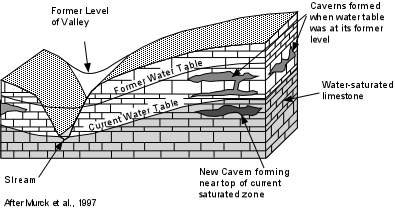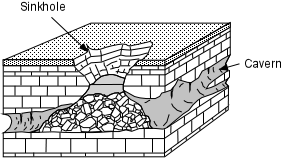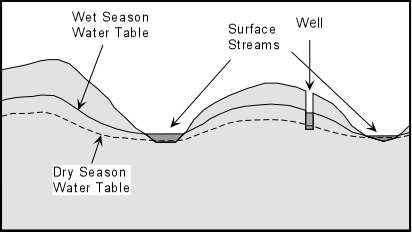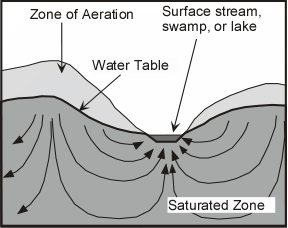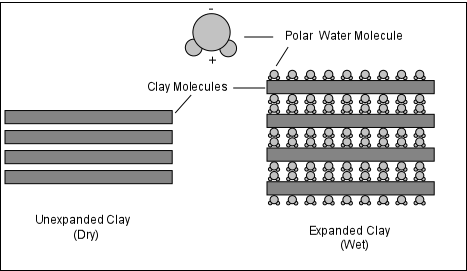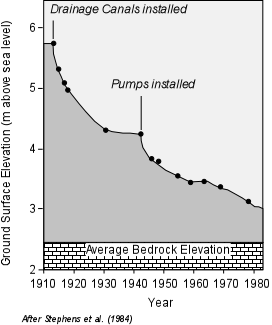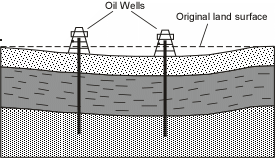Surface Subsidence and Collapse
Subsidence hazards involve either the sudden collapse of the ground to
form a depression or the slow subsidence or compaction of the sediments near the Earth's
surface. Sudden collapse events are rarely major disasters, certainly not anywhere
near the scale of the earthquake, volcanic, tsunami, or landslide disasters, but the slow
subsidence of areas can cause as much economic damage, although spread out over a longer
period of time.
The most common type of sudden collapse is due to erosion of underground soil or rock caused by leaking human-made sewer pipes or water mains. This rarely destroys large areas, but commonly swallows up vehicles.
The second most common type of sudden collapse involves dissolution of carbonate rocks (limestones) beneath the surface.This is the topic we will cover first.
Carbonate Dissolution
Carbonate rocks such as limestone, composed mostly of the mineral calcite
(CaCO3) are very susceptible to dissolution by groundwater during the process
of chemical weathering. Such dissolution can result in systems of caves and sinkholes.
Dissolution
Water in the atmosphere can dissolve small amounts of carbon dioxide (CO2
). This results in rain water having a small amount of carbonic acid (H2CO3)
when it falls on the Earth's surface. As the water infiltrates into the groundwater
system and encounters carbonate rocks like limestone, it may start to dissolve the calcite
in the limestone by the following chemical reaction:
CaCO3 + H2CO3 = Ca+2 + 2HCO3-2,
which states that calcite reacts with carbonic acid to produce dissolved
Calcium ion plus dissolved Bicarbonate ion.
This reaction takes place as the water moves along fractures and other
partings or openings in the rock. This results in dissolution of much of the
limestone if the reaction continues to take place over a long period of time. |
